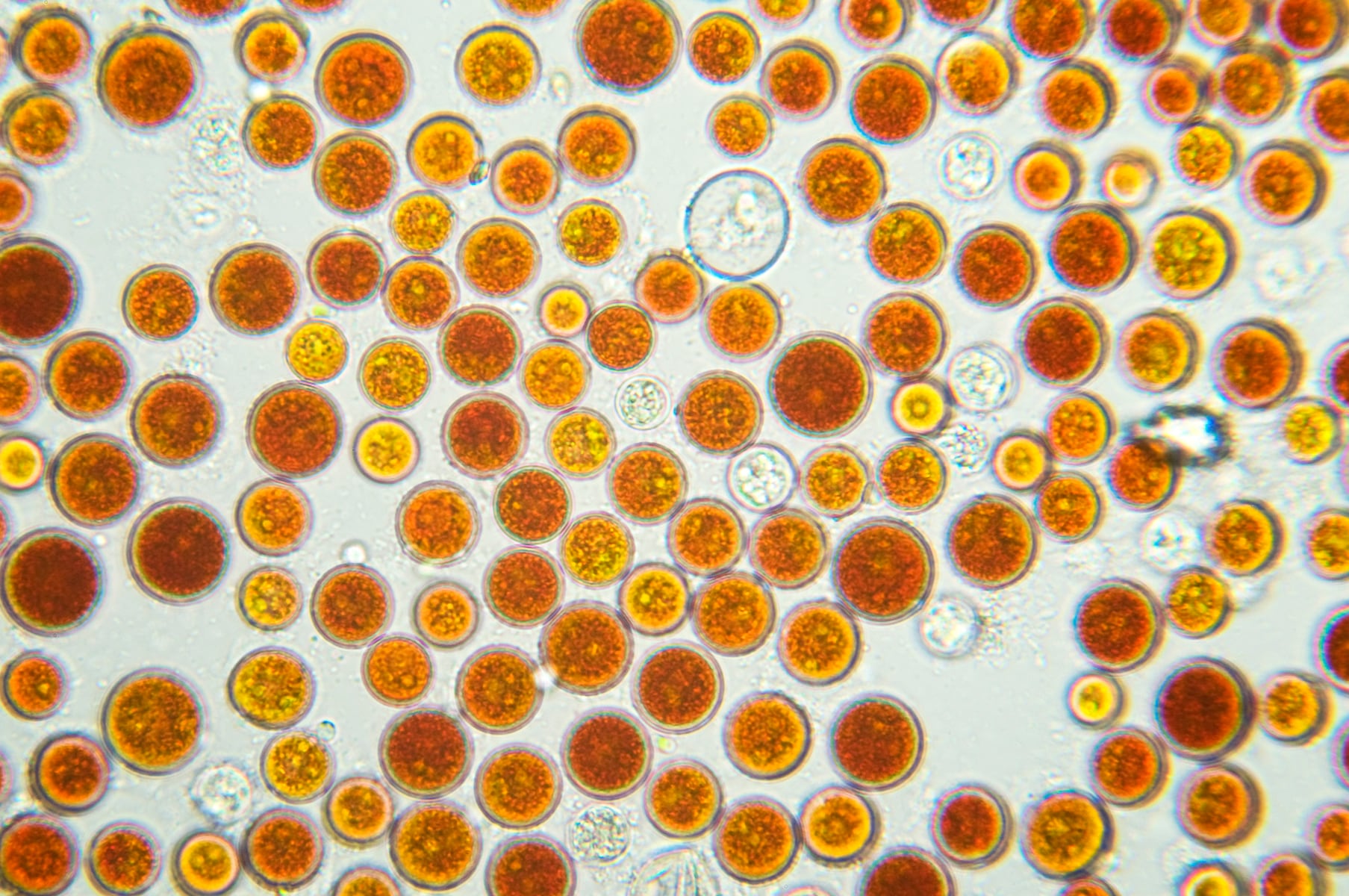Four days of supplementation with AstaReal’s astaxanthin at a high dose of 28 mg per day was also associated with decreases in markers of muscle damage and oxidative stress, according to findings published in BMC Sports Science, Medicine and Rehabilitation.
“Our findings demonstrated that short-term [astaxanthin] supplementation enhanced endurance performance among young college adults,” wrote scientists from China Medical University and National Taichung University of Education. “Pre-supplementation of [astaxanthin] effectively decreased exhaustive cycling challenge-induced muscle damage and lipid peroxidation.”
Algae-derived ingredient
Astaxanthin is a reddish carotenoid with powerful antioxidant activity that is sourced from the microalga Haematococcus pluvialis. The ingredient can also be produced synthetically, much of which is used in aquaculture to give farmed salmon a richer pink color.
It has been studied for its antioxidant, anti-inflammatory, eye health benefits, cardioprotective properties, immune system modulatory activity and neuroprotective activities, and demand for astaxanthin supplements has grown over the years as more science emerges to support its benefits.
The carotenoid’s potential benefits for athletic performance have been studied in various trials over the years, and astaxanthin has long had a dedicated following among the long-distance runner and triathlete communities.

Study details
The new study included 10 healthy young men who were randomly assigned to receive either the astaxanthin supplements (28 mg per day) or placebo for four days. On the last day, the men performed an exhaustive cycling exercise. This was followed by a seven day “washout” period with no intervention, and they then crossed over to the other group for four more days and another bout of exhaustive cycling exercise.
Results showed that astaxanthin supplementation significantly enhanced cycling performance, measured as the time to exhaustion, compared to placebo. Specifically, the time to exhaustion of the astaxanthin group was, on average, 13 minutes longer than placebo (85 minutes versus 72 minutes, respectively).
Creatine kinase and lactate dehydrogenase, markers of muscle damage, did not increase after astaxanthin supplementation, but did increase after placebo.
“These results imply that short-term [astaxanthin] supplementation might be effective in reducing the exhaustive cycling-induced muscle damage in young adults,” the researchers wrote.
Increases in malondialdehyde (MDA), a marker of oxidative stress, were also inhibited by astaxanthin supplementation, but no overall impact was observed on total antioxidant capacity or inflammatory response.
“Taken together, short-term [astaxanthin] supplementation exhibited ergogenic effects, which may be attributed to its protective role against cycling challenge-induced muscle damage or lipid peroxidation in healthy young adults,” the researchers concluded.
A temporary “ramp-up” protocol
Commenting on the new study, Karen Hecht, PhD, Vice President of Science for AstaReal, Inc., told NutraIngredients: “What sets this study apart is the remarkably short duration of supplementation—just four days—compared to the typical four-week period commonly observed in the literature."
Dr. Hecht noted that most studies conducted over a four-week supplementation period have used lower doses of astaxanthin, typically ranging from 4 - 12 mg / day, whereas the new study used a significantly higher dose of 28 mg / day.
“While the FDA’s New Dietary Ingredient Notification (NDIN) establishes a continuous supplementation limit of 12 mg / day for astaxanthin, a short-term regimen of 24 mg / day for up to four weeks has also been NDIN-notified,” she said. “This higher dose is intended for individuals new to astaxanthin supplementation who need to rapidly build up astaxanthin levels in preparation for athletic events or high-volume training periods.
“Although the dosage used in this study exceeds current NDIN limits, it offers valuable evidence supporting the rationale for a temporary “ramp-up” protocol. This approach introduces a novel application for astaxanthin as an acute intervention, distinct from the more established maintenance doses designed for long-term supplementation and preventative health strategies."
While the study demonstrated a significant effect of astaxanthin on time to exhaustion, the broader literature indicates that performance-related outcomes may vary depending on the type of training and whether astaxanthin is used in conjunction with exercise, said Dr. Hecht.
She noted that for endurance-trained athletes, such as cyclists, astaxanthin supplementation has been previously been associated with improvements in power output, time trial performance, endurance, and substrate utilization (Earnst et al. 2015, Malmsten et al. 2008, Brown et al. 2021, Gonzalez et al. 2024).
“In contrast, resistance-trained athletes have not reported either positive or negative changes in exercise performance with astaxanthin supplementation. However, these athletes have experienced a notable reduction in post-exercise soreness, highlighting a potential recovery benefit rather than a direct performance enhancement (Barker et al. 2023)," she added.
“Furthermore, astaxanthin may have a synergistic effect when combined with exercise. This has been demonstrated in older subjects supplementing with astaxanthin together with a 3-month strength and endurance training protocol (Liu et al. 2018) and in young training paramedics training over a 6 month period (Malmsten et al. 2008). It has been previously observed that benefits of protein and creatine supplementation may also depend on concomitant exercise training.
“For those seeking to support adaptation to exercise using astaxanthin, a consistent supplementation regimen combined with exercise may yield more consistent and sustained benefits.”
Source: BMC Sports Science, Medicine and Rehabilitation, 2025, 17, 180. doi: 10.1186/s13102-025-01221-3, “Effect of astaxanthin supplementation on cycling performance, muscle damage biomarkers and oxidative stress in young adults: a randomized controlled trial”. Authors: J.P. Tsao, et al.




